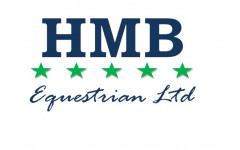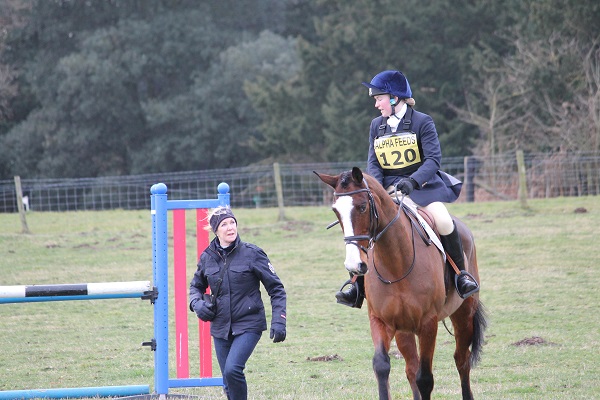Posted: 24th June 2019 | Back to news feed

Warming up at a competition is not the time to reinvent the wheel and knowing what you want to achieve will help you plan a productive warm-up. Here Harriet Morris-Baumber offers her advice on warming up during an event.
To get the best out of your horse at a competition it’s important to make the most of your warm-up time. This gives you an opportunity to loosen up your horses’ muscles as well as take the edge off your own nerves.
For event horses this means warming up three times for the three different phases, with different factors to consider for each discipline.
Event rider and trainer, Harriet Morris-Baumber, uses her warm-up time wisely to ensure her horse is competition-ready when she enters the arena or start box.

Said Harriet: “Every horse is slightly different and, although many will share similar needs in their warm-up routine, knowing your horse is key to a truly successful warm up.”
Dressage
How long should I warm up for? What should I include and not include? These are all questions you should ask yourself in order to give you and your horse the best opportunity to deliver a great performance.
You need to know how long it takes to warm up. At home make a note of the time you start working your horse or set the timer on your phone. When your horse starts to feel really good and completely with you, look back at the time – this is how long you should aim to warm up for on competition day ahead of the dressage.
Think about what you need to include in the warm-up to get the best from your horse. Some horses benefit from riding through the test in the warm-up (as well as you can without markers and boards) while others will benefit from just picking certain movements to practise.
Knowing what not to include in the warm-up is just as important as knowing what to include. Some horses become wound up and anxious when repeating the same movement over and over again, while others relax with the repetition.
Pick a zone or an area that suits you and your horse. This could be a quiet corner or a space as close to the arena as possible. If you have a particularly spooky or buzzy horse, try to avoid the area right next to the stewards as this is where you will get the most ‘traffic’ and have to steer round more people and horses.
Show-Jumping
“As a general rule I only start jumping when there are seven or eight riders to go before me. Any more than this and you risk peaking too early.” explained Harriet.
Warming up for the show-jumping phase can be fraught and is often a hot spot for tension, with riders getting uptight. It is import to zone out from what everyone else is doing and focus on yourself, your horse and your own warm-up routine. Never be afraid to say you are not ready as there will always be someone desperate to go early.
Try to be as disciplined as possible and make sure you apply all the training techniques you have practised at home. If you know your horse needs to be responsive in the ring, practise this in the warm-up. Equally, if your horse is very buzzy you may need to prioritise staying relaxed and rhythmical.
If you are lucky enough to have a helper on the ground, brief them on exactly what you want in terms of the practice fence – how big, how high and how you need a ground line.
Don’t be afraid of moving the fence if the take-off and landing area has become worn.
Some horses get a confidence boost from only jumping smaller fences whilst others need to knock one down to enter the ring switched on. Ensure you know your horse well enough to save your best for the ring.
Cross-Country
If you’re warming up for the cross-country phase at a One Day Event the ‘warming up’ of the muscles has well and truly been done by the other two phases, so really there is very little that needs to be done in the warm up before cross-country.
Check how many there are to go before you and then have a pop over one or two fences, maybe angle one if there is a fence on the course that requires it to be jumped from a particular angle and you feel it’s beneficial to practise that in the warm up.
If there is then a big gap and you end up walking around a lot, jump one more jump as the one before you set off and if your horse has a sticky jump be sure to give them a reminder on landing, with the leg or the stick. They must set out feeling positive and taking you to the jumps and away from them.
There is no real reason to ‘open the horse up’ in the cross-country collecting ring, save the petrol for out on the course. As long as they're in front of your leg they will naturally open up between the fences.
While you are walking round, keep going through the course in your mind, each turn, approach, jump, landing, get away. The more times you rehearse it in your head, the easier it will all flow in reality.
For help planning your winning warm-up strategy contact Harriet (07795) 562745 or visit www.harriet-morris-baumber.co.uk
The Equestrian Index newsfeed is compiled from articles submitted by advertising members and expresses the opinions of those members. Watsons Directories Ltd shall not be held liable for any inaccuracies or mis-statements therein.